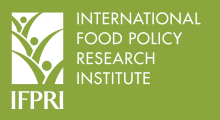Resource information
Zambia is one of the poorest countries in Africa. Despite substantial reform during the 1990s, the economy has remained heavily dependent on urban-based mining. Copper's long-standing dominance led to a strong bias against agriculture, which undermined the sector's growth and export potential. Consequently poverty has remained concentrated within marginalized rural areas. Recent volatility in copper exports and growing foreign debt indicate the need for further economic diversification and pro-poor growth. These needs have been clearly identified in the country's Poverty Reduction Strategy Paper (PRSP), which outlines a series of policy objectives aimed at combating HIV/AIDS, reversing the deterioration of education and rural infrastructure, and accelerating agricultural growth. This paper uses a computable general equilibrium (CGE) model to assess the potential impact on inequality and poverty of the key PRSP policies, as well as the effects of foreign debt forgiveness and changes in the copper sector. The findings suggest that, in the absence of very rapid growth, the pro-poor policies outlined in the PRSP will not enable Zambia to reach its Millennium Development Goal (MDG) of halving poverty by 2015. Achieving this goal will require gross domestic product (GDP) to grow at an annual rate of over ten percent. Reduction in poverty can however be achieved by addressing HIV/AIDS, which currently reduces annual GDP growth by one percent. Furthermore, substantial poverty-reduction can occur through the acceleration of agricultural growth, although limited market opportunities necessitates supporting investment in rural infrastructure. Overall, the potential of the agricultural sector depends on the government's commitment to reforms and the continued removal of the antiagricultural bias created by the dominant copper sector." -- Authors' Abstract


